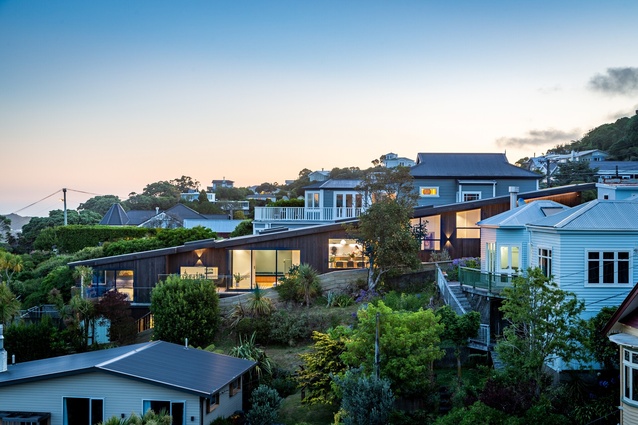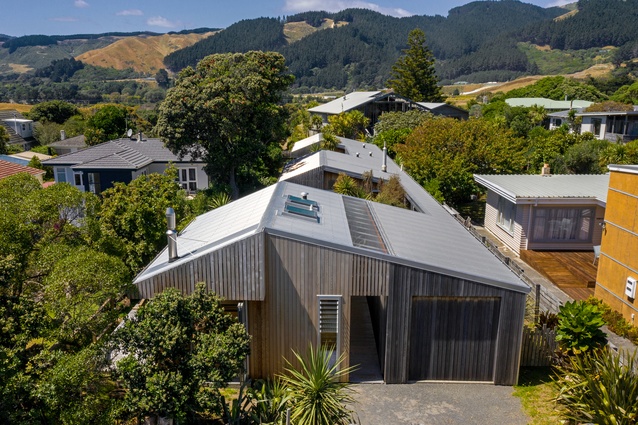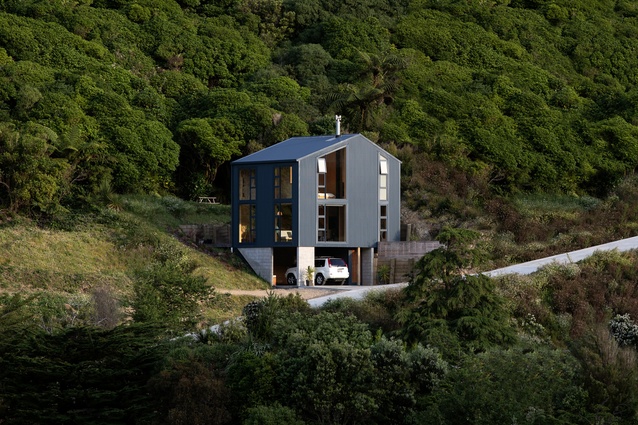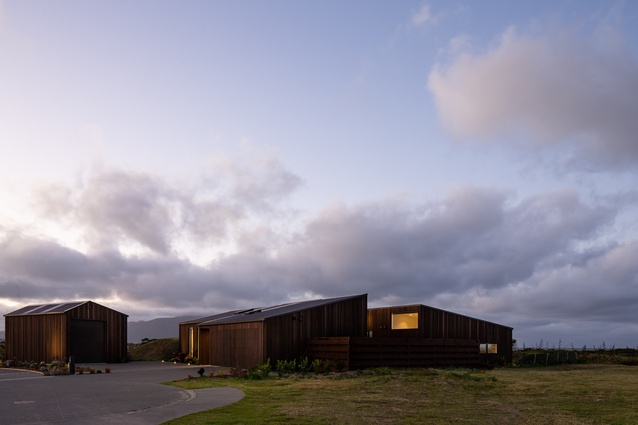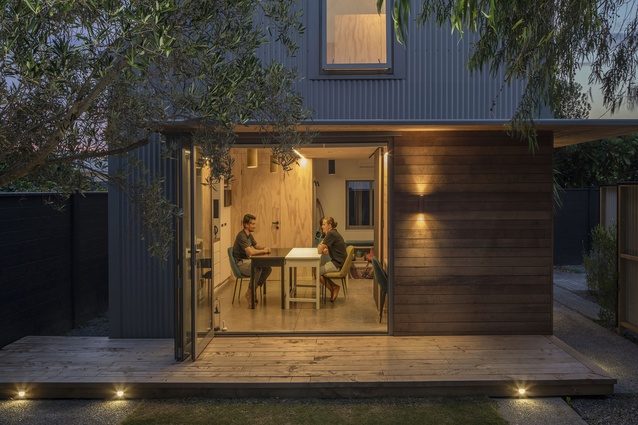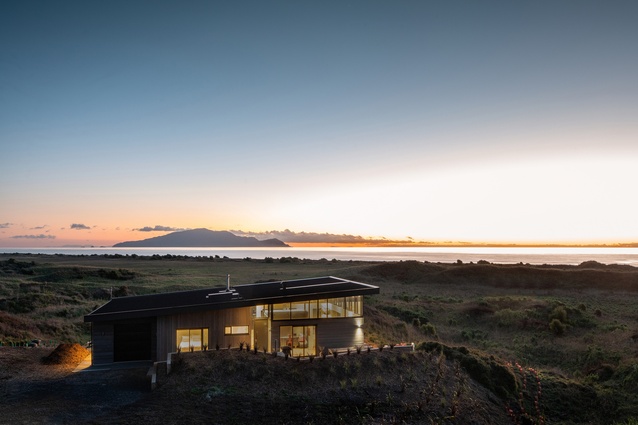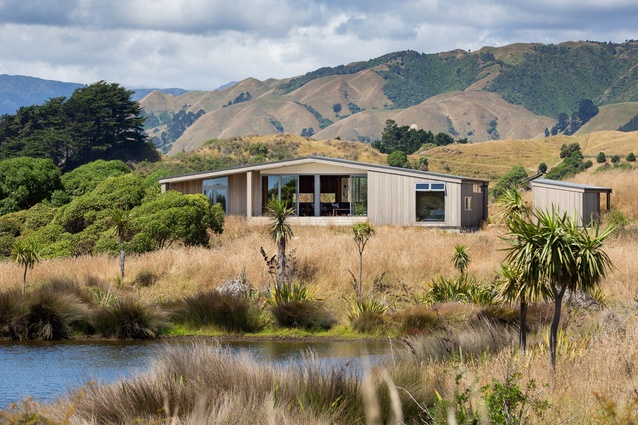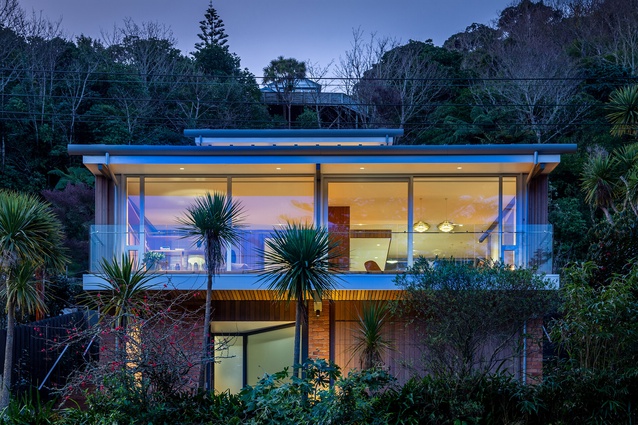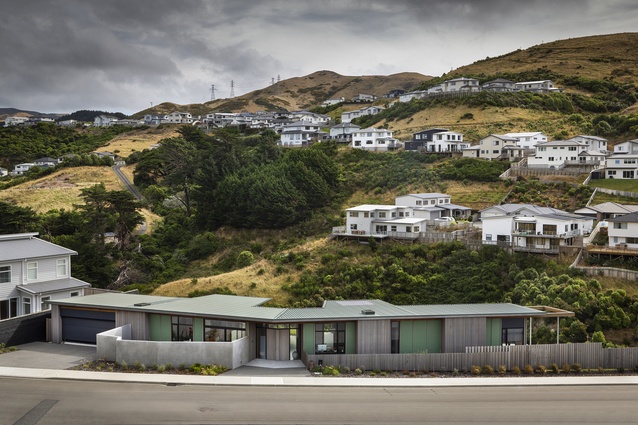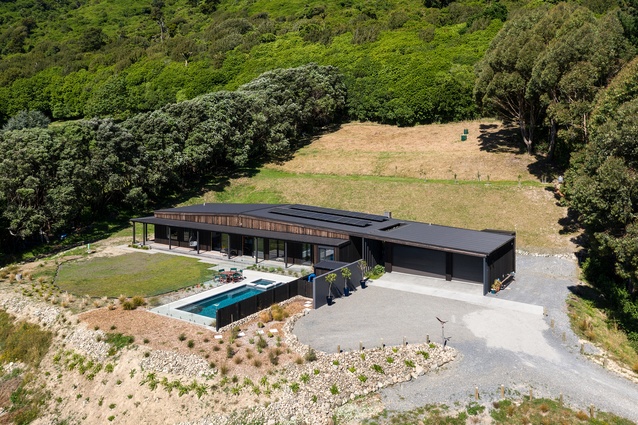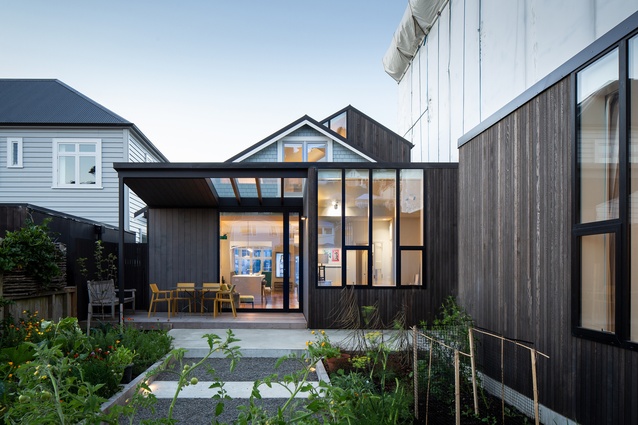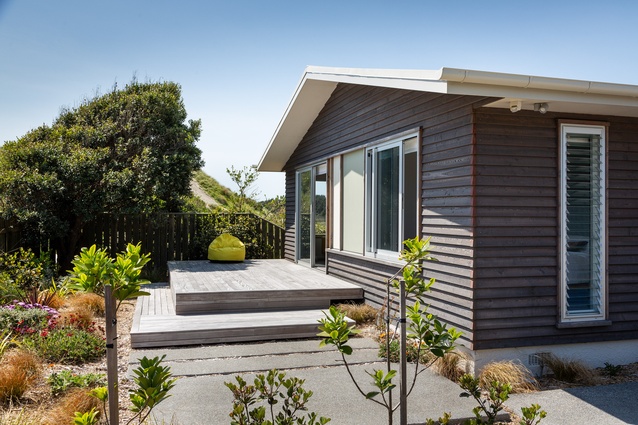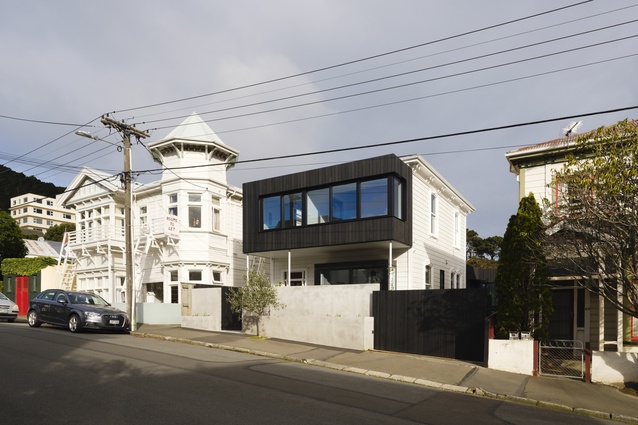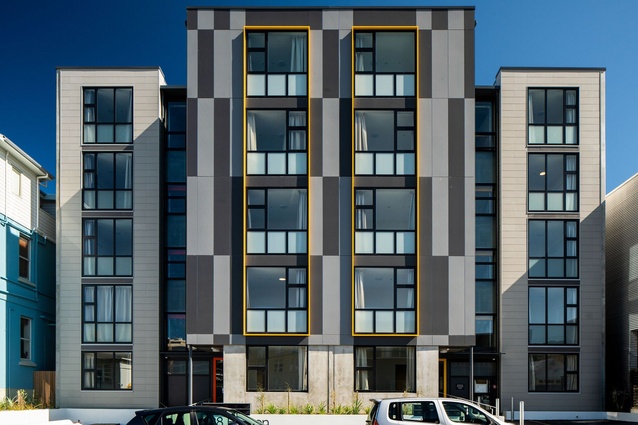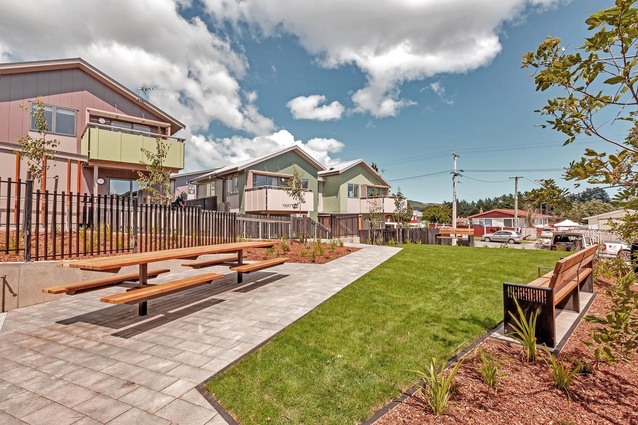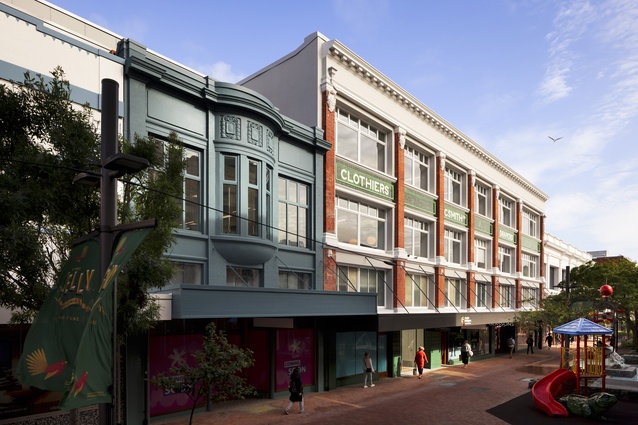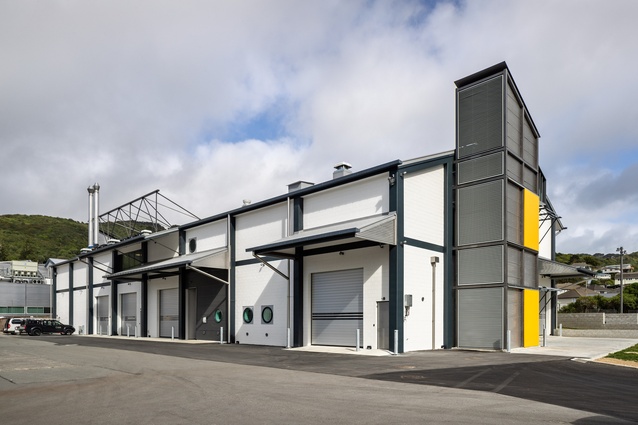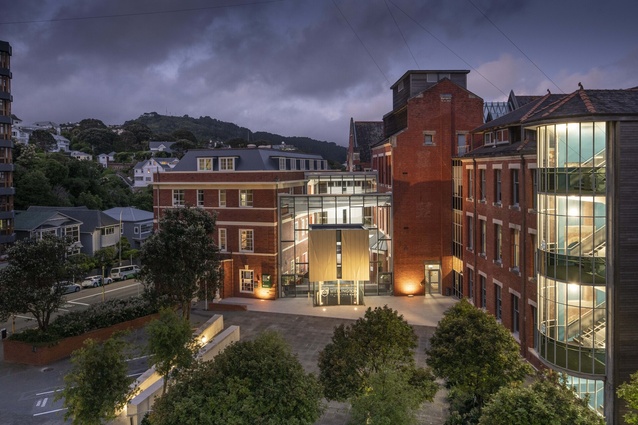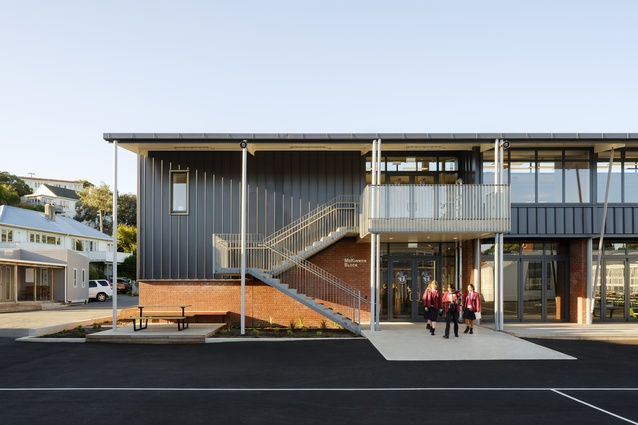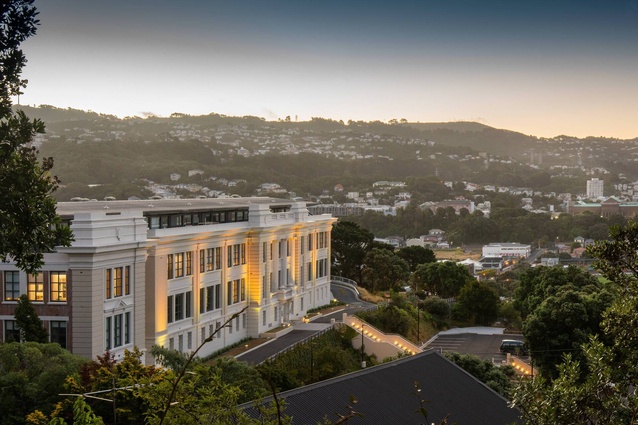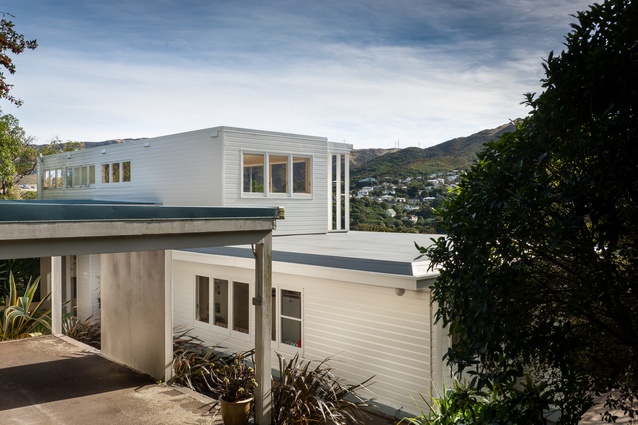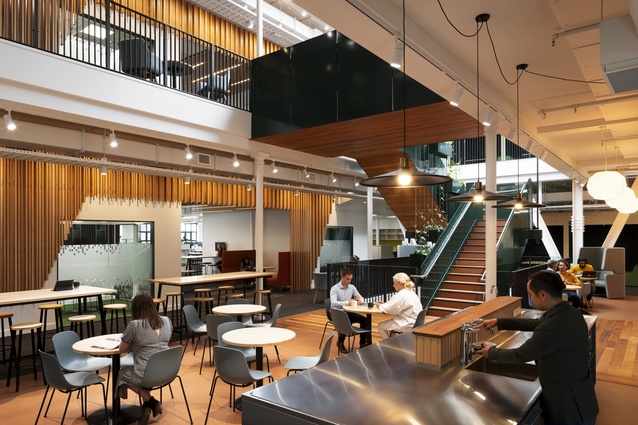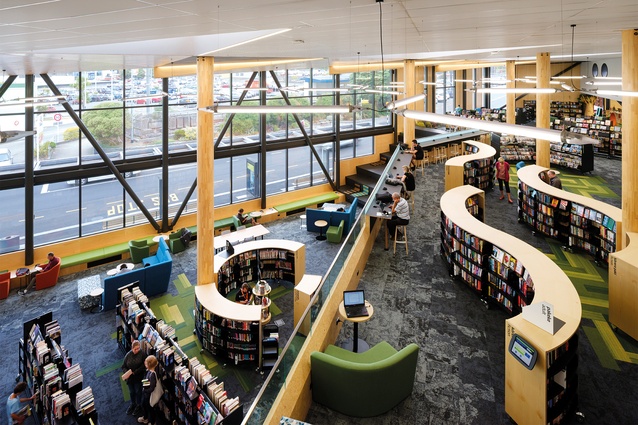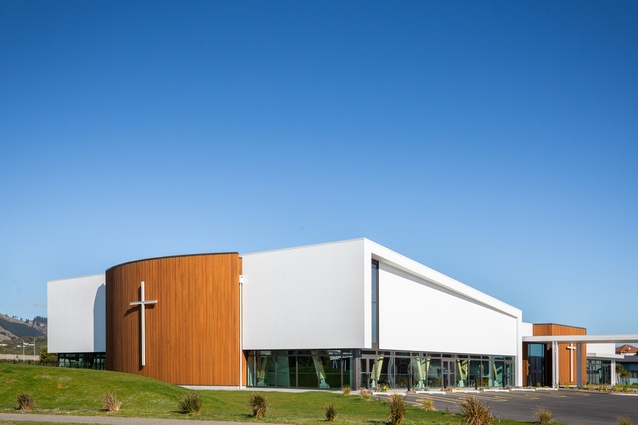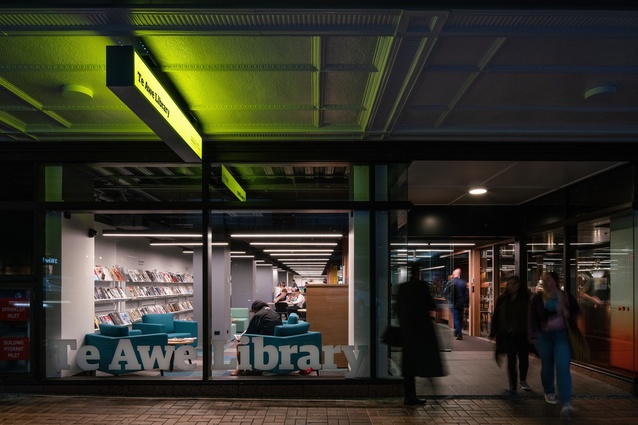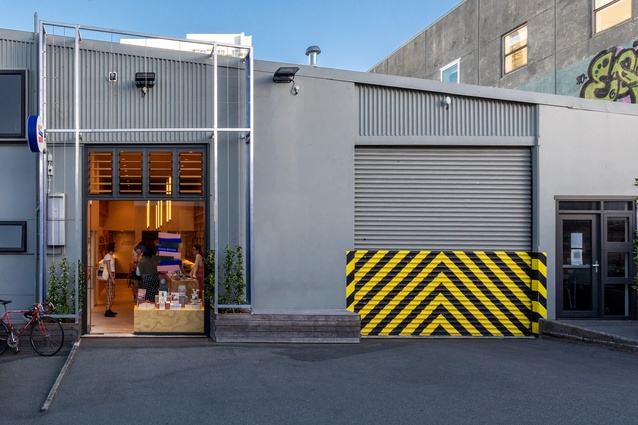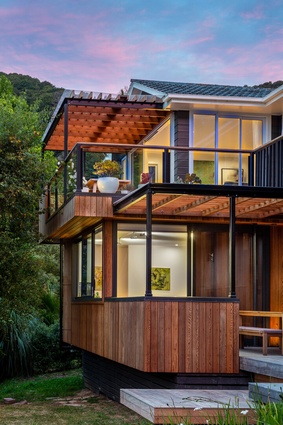Winners revealed: 2021 Wellington Architecture Awards
Two Kāinga Ora social housing developments are amongst the 28 winners in the Capitol region honoured for their design, along with one Enduring recognition.
Following on from the Waikato/Bay of Plenty region, the Te Kāhui Whaihanga New Zealand Institute of Architects (NZIA) Local Awards have been handed out for Wellington.
On the jury, convenor Andrew Sexton of Andrew Sexton Architecture was joined by Meiling Honson of Jasmax, Rodney Sampson of Warren & Mahoney, Mary Daish of Mary Daish Architect and Nick Bevin of Nick Bevin Architect.
Reflecting on Wellington’s unique architectural needs, Sexton remarked that the winners “demonstrated how we can house people at greater density, whether that be in apartments or as infill dwellings; how Wellington’s architects continue their legacy of homes built on challenging hillsides; how we care for our built heritage at both a very large and a very small scale, and how we create spaces for our communities in the heart of our city.”
In total, 28 winners were recognised for their new projects, with an Enduring Architecture award also handed out at the ceremony, held this year at the Embassy Theatre.
See the full line-up of winners below with jury citations.
Housing
Hill House by Novak+Middleton
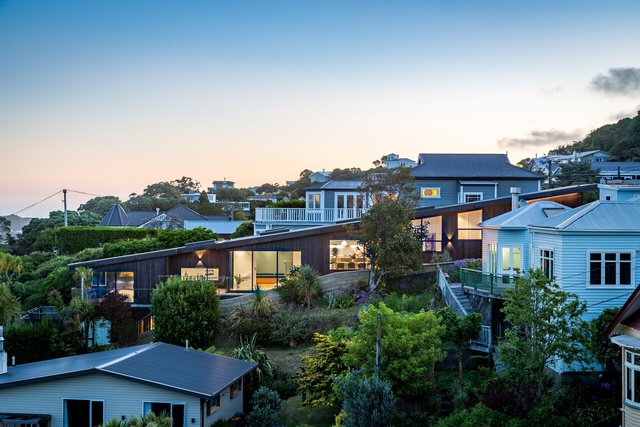
A dramatic sloping roof shelters a series of spaces that cascade down the length of this narrow site. The client’s request for an exemplary hillside home that maximises views of Wellington city and the distant harbour has resulted in an unobtrusive form that also maintains the views from neighbouring homes. A central circulation spine links the stepped north-facing living spaces and courtyards, while utility areas and snug spaces form a ribbon of use along the south side. The result is a light-filled family home with an amazing connection to the city.
Werry House by Bonnifait + Giesen Architects/Atelierworkshop
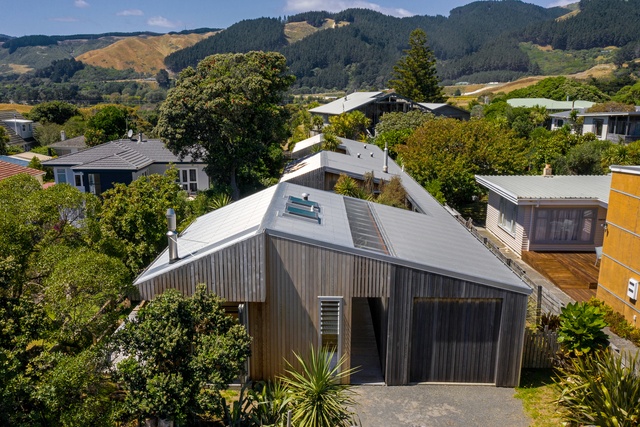
The recent addition of a flexible, self-contained writing studio completes this relaxed home, which has been thoughtfully sited and scaled to sit comfortably on a long and narrow coastal site. The timber-clad form of the home has been precisely inserted around two clusters of mature native trees, allowing every room to access an outlook and sunlight, while creating sheltered north-facing courtyards and garden rooms. The long circulation hallway to the south both connects and separates the various uses of the home, and provides access to efficient service spaces. The selection of materials throughout is consistent, robust and appropriate.
Thornton + Hasegawa House by Bonnifait + Giesen Architects/Atelierworkshop
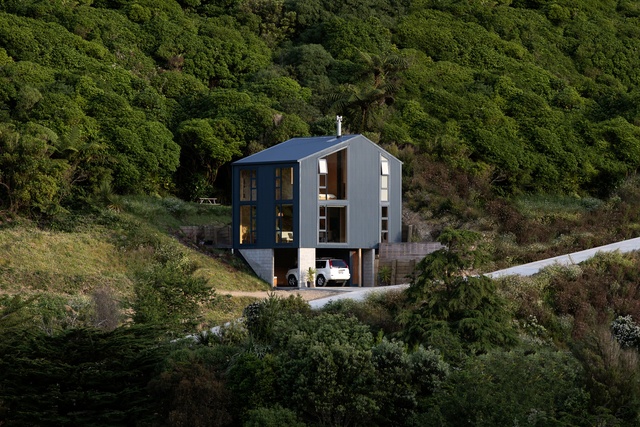
This design for a modest home not only considers its environmental impact, but presents an affordable and architecturally rich solution. Pulled forward from the hillside to minimise excavation on its steep site, this two-storey tower occupies a footprint just 50 metres square. Interior volume is carefully balanced by perfectly sized compact spaces, and bedrooms connect to a slim, double-height, north-facing space via interior shutters. Kitchen and bathroom utility areas borrow space from the central stair to become more generous. Clever storage solutions are abundant and add another layer of architectural delight to this home.
Resene Colour Award winner
The kowhai yellow stair delivers a dynamic beam of sunshine through the interior of this home. Combined with the use of the honey-coloured strand-board for the interior linings, and with yellow internal shutters, this home is always filled with a warm glow, even on a bleak day.
Takahē House by Designgroup Stapleton Elliott
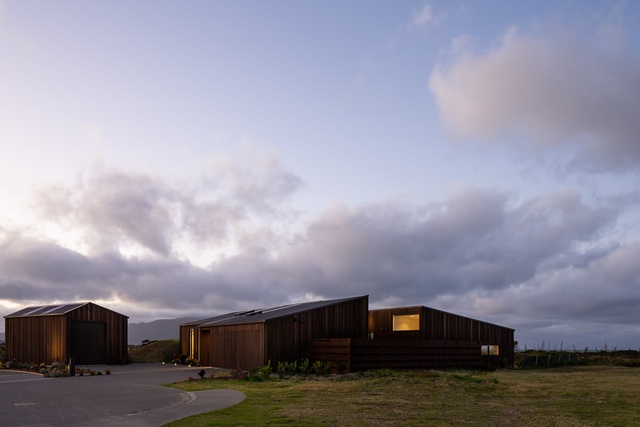
Making the most of an exceptional outlook over coastal wetlands towards Kāpiti Island, the simple form of this home nestles into the dunes while sheltering internal courtyard spaces from the prevailing winds. The thoughtfully composed floor plan divides the home into quadrants of use while ensuring sea views are always handy; the central spine containing kitchen and dining connects the entryway to ocean views beyond. External timber claddings continue seamlessly inside and out, and immaculate construction reveals some crafty detailing
The Cube by First Light Studio
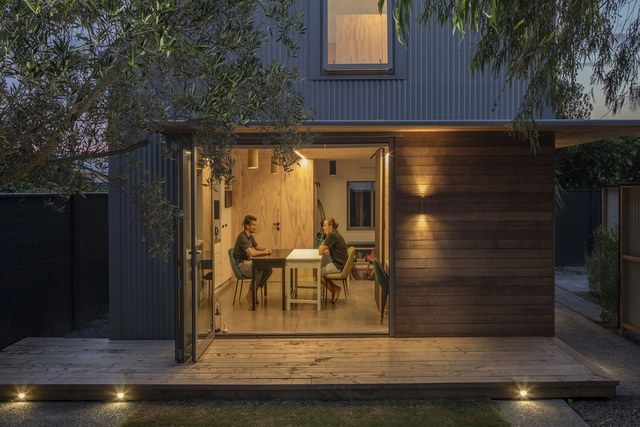
A home for downsizers, this intelligent backyard infill home has been scaled accordingly. No space is wasted – the 36-square-metre footprint doubles as a classroom with sliding blackboard that allows tutoring from home. A loft bedroom fits snugly into the steeply pitched roof, making the most of the rationed volume, ample natural light, and the material warmth of the interior. Cunningly sited on the footprint of an existing garage, the home opens to a private garden accessed under a slim canopy of steel and recycled timber from the owner’s old farm shed. The design successfully combines affordability, liveability and sustainability, creating a haven that must be a joy to reside in.
Te Horo Beach House by First Light Studio
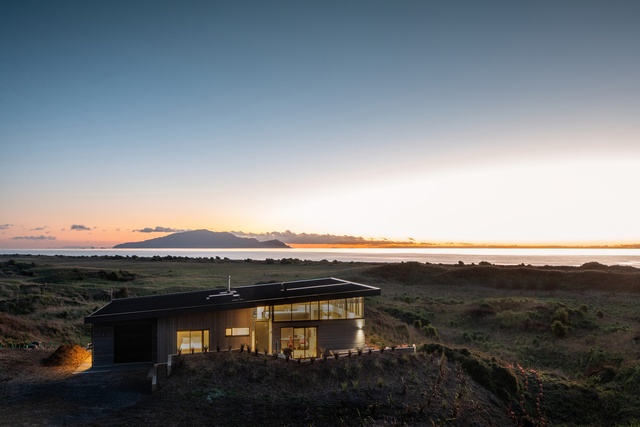
Commanding its site within the Te Horo sand dunes, the form of this home announces itself with a lantern-like clerestory under a rising roof plane. The compact, light-filled living space connects to an extensively replanted dune landscape and to Kāpiti Island beyond. The dwelling offers retreat-like bedrooms and numerous deliberately framed views. A durable material palette of cedar cladding, timber linings and perforated sliding metal screens ensure a sympathetic yet engaging response to this harsh but beautiful coastal landscape.
Peka Peka Escape by McKenzie Higham Architects
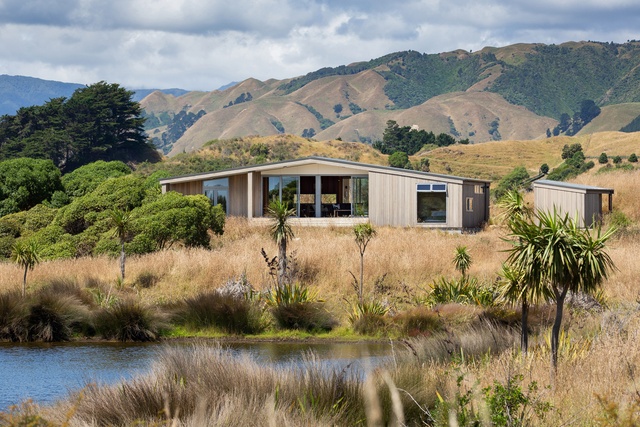
Shifting the entry from the position dictated by the original subdivision was a key design move for the success of this project. From between two dunes, an angled boardwalk leads the way to a bach, with views to the lake gradually revealed. The play between a strong, low-slung gable roof form and exterior walls that step and angle below creates a variety of outdoor spaces that provide shelter from sun and wind. An extra dimension is added to the simple floor plan by stepping down into private bedroom spaces. Cedar boarding is carried though into the interior which, combined with exposed timber beams, creates texture, colour and rhythm.
Garden House by Parsonson Architects
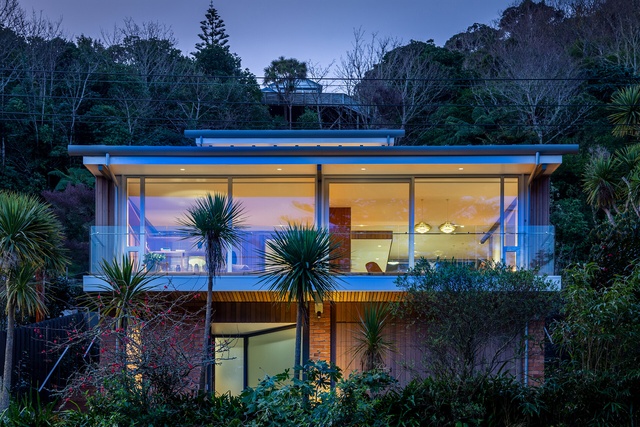
A decision to reuse the existing basement on this site meant the architects had a platform on which to create a delightful and confidently designed home. This light-filled living environment extracts the true potential of its hillside site with views into the Botanic Gardens, while also creating a series of rich internal spaces anchored around a sheltered courtyard. A restrained material palette works harmoniously with its bush setting, and the retention of existing bricks adds a layer of depth and tactility to the overall outcome. Subtle and consistent detailing along with wonderful cabinetry insertions provide a cohesive design that enriches daily living.
Long House by Parsonson Architects
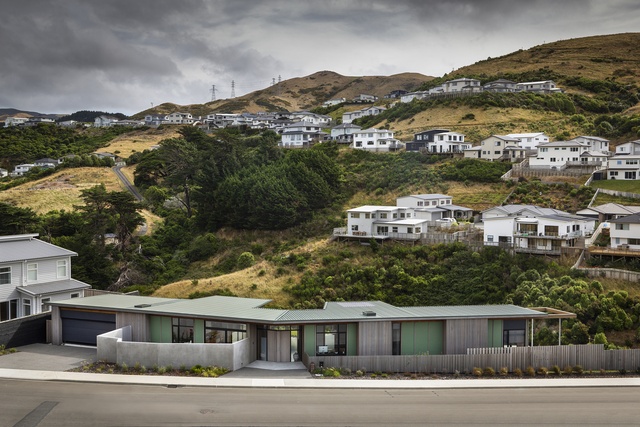
This long, slender home hugs the edge of a thin site between the street and a Churton Park valley. Perched on the edge of the valley with a strong horizontal profile, this home sits in harmony with its site, and in contrast with its two-storied neighbours. The architects have listened carefully and created a variety of spaces to live in, from the sheltered courtyard on the east that provides respite from the wind that whips down the valley, to an outdoor room complete with ping pong table on the west. The floor plan subtly kinks and unfolds at the entry into a series of beautifully crafted spaces filled with light. Vertical timber trims provide a rich layer of texture and detail to the interior; deft touches such as these make this a warm, and welcoming home.
Resene Colour Award winner
The confident use of colour throughout the interior provides an element of surprise upon entry. Clay reds, stained plywood ceilings, and beautifully detailed timber trims complement the clients’ art and ornaments, and pay homage to their previous 1970s Craig Craig Moller home. The green metal roof, Western Red cedar cladding and painted green infill panels allow this new home to recede comfortably into its hillside landscape.
Echo House by Three Line Studio
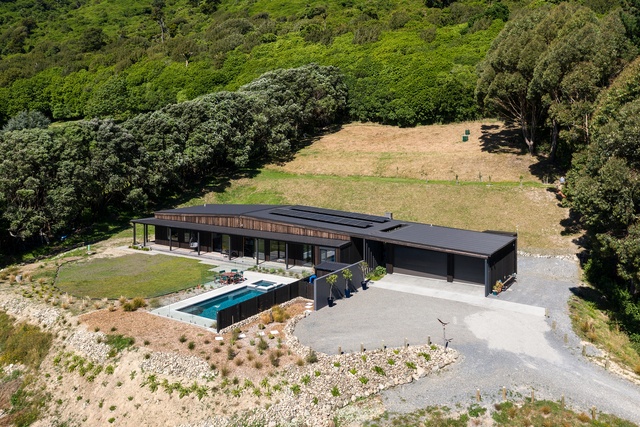
Inspired by the history of Kāpiti Island and the whales that were once plentiful in the area, the design idea of a spine and ribs were used to organise this home. The carefully orchestrated entry gradually leads to a strong spine hallway layered with architectural opportunity. Not only does it offer a clear circulation path, but also connects to exterior spaces and beautiful views beyond through strategically positioned openings. Verandas not only offer shading, but allow garden spaces to become a series of useful outdoor rooms. Certified as a Passive House, this project has used sustainable design principles to create a home that is elegant, understated and timeless.
Housing – Alterations and Additions
McFarlane Street House by architecture +
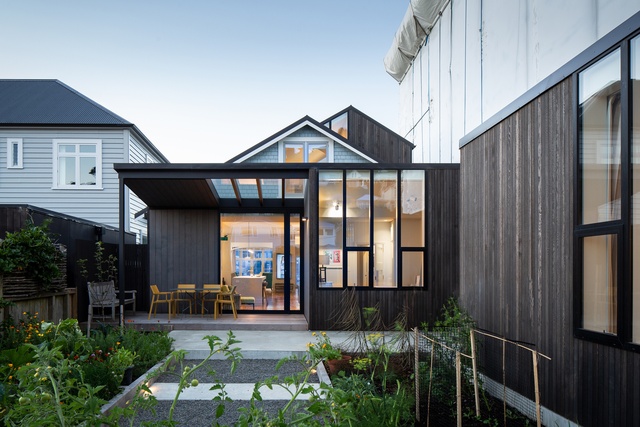
This project is a masterclass in spatial manipulation that extracts the latent potential from an existing California bungalow on a tight Mount Victoria site. The difficulty of producing such an elegant result from the existing building is an achievement that cannot be overstated, and is testament to a series of well-judged and sympathetic design decisions. With exquisite detailing throughout, the result provides clarity to the planning and unlocks the use of the entire site, transforming this bungalow into a home that is aligned with its owners’ city lifestyle.
Otaki Beach Alteration by Sharon Jansen - Architect
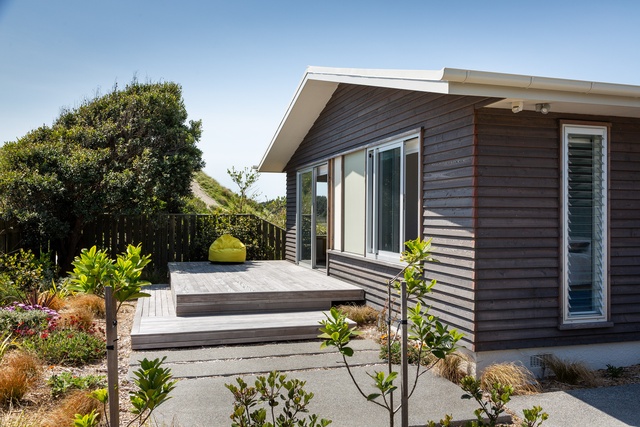
By linking two existing 1970s units with a new kitchen and sheltered deck, the architect has skilfully created a new heart for this beachside home. Exposing the existing roof trusses creates a new spaciousness in the living area, and a slatted timber screen defines the space while providing a place for nick-nacks. Rooms are flexible and interchangeable, allowing for various uses, numbers of people, and changing seasons. Asbestos cladding was removed and replaced with horizontal stained larch, while new windows frame the sand dunes and hills beyond. This home is an exemplar of how imaginative architectural thinking can transform problematic existing buildings into a much-loved home.
Resene Colour Award winner
The use of larch cladding coupled with the colour palette of yellow, white and green on the exterior sits naturally in its landscape of grassy sand dunes. Inside, powder blue vertical timber boarding reflects the owners’ personalities. The result is a bach that respects its 1970s origins and remains unobtrusive in its setting.
Ellice Street House by Studio of Pacific Architecture
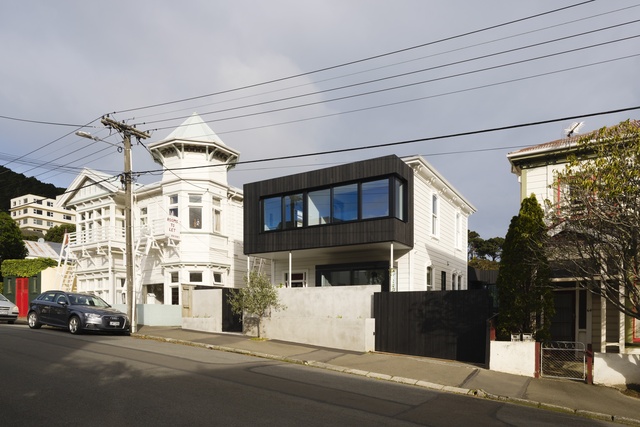
A distinctive street addition reveals that something is brewing within this villa in the character suburb of Mount Victoria. Book-ended between dark stained timber additions, the retained heritage of the existing home is clearly identified in white. Restraint within the interior of the villa gives way to an unexpected voluminous dining room and theatrically cascading stair leading to a contemporary living pavilion one level below the street. This extensive renovation composes a series of remarkable spatial manoeuvres and effortless sequences of volume and surface.
Housing – Multi Unit
Kāinga Ora, Hanson Street by Herriot Melhuish O’Neill Architects
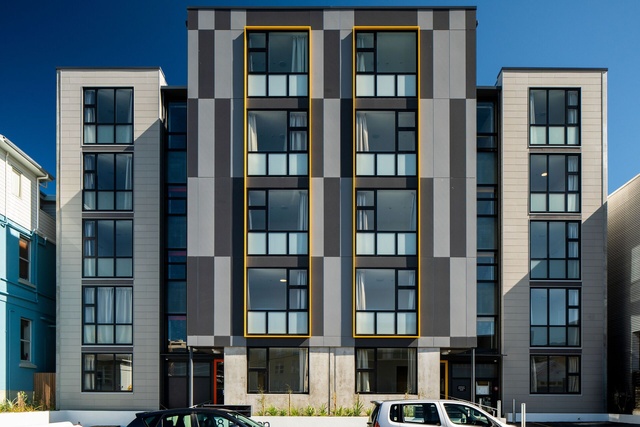
This development of 20 one-bedroom homes carefully balances tight budget and strict Kāinga Ora guidelines with precise planning strategies to enhance the living experience for all residents. Providing two lifts has allowed for direct lobby access to all homes, eliminating the need for long, unfriendly corridors, and the resulting light-filled lobbies provide a generous sense of arrival. Locating the building close to the street allows space for new communal garden spaces, as well as admitting maximum sunlight into homes and outdoor areas. The shared rear garden also provides a communal drying room that has quickly been claimed by the residents as a shared social space. This is a building that should give Kāinga Ora the confidence to create more of this desperately required density of housing.
Castor Crescent Kāinga Ora Development by Tennent Brown Architects
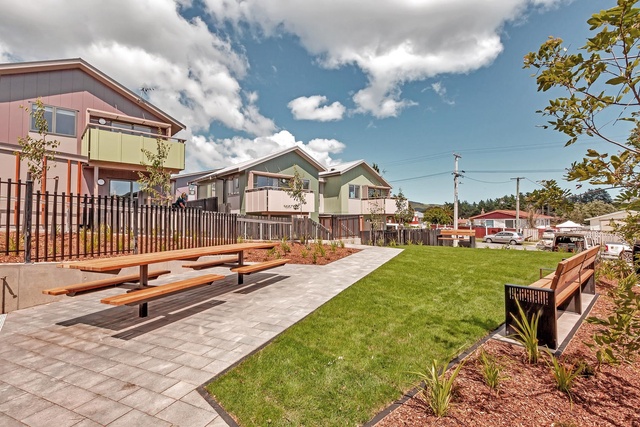
This Porirua East redevelopment provides a mix of social housing, from single-occupant homes to five-bedroom family dwellings. The clients wanted to avoid terraced housing, and the resulting arrangement of buildings and spaces creates privacy, makes room for clearly legible front doors, and admits sunlight into each home. The smaller one-bedroom homes face the pedestrianised street and communal barbecue area, providing passive surveillance of public areas while encouraging interaction for these solo residents. As one of the first Kāinga Ora projects to achieve a 6 Homestar rating, these healthy homes will create long-term benefits for residents. This project reaffirms that well-considered architecture can be achieved and enjoyed by all, not just those who can afford it.
Resene Colour Award winner
The power of colour to create community is on show here, where it is articulately used as a form of wayfinding, to create a sense of variety, and to break down scale. Colour has made each dwelling identifiable to both occupants and visitors, and highlights the importance of colour in design.
Commercial Architecture
Cuba Precinct Redevelopment by Athfield Architects
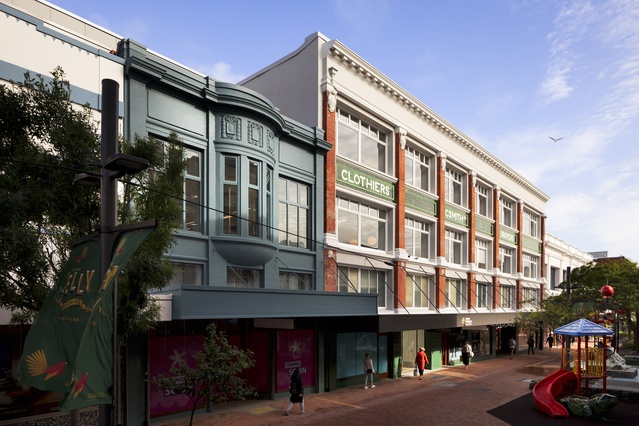
This project rejuvenates an important piece of Wellington’s heritage fabric, and rejuvenates a significant portion of Cuba Street. The outcome transforms three existing buildings into a single cohesive commercial offering. The large, combined floor plates unlock the potential for new tenancy options which are enriched by the retention of the existing internal skylights and atrium, creating a high-quality workspace. The new central entry point connecting to the heart of the building with a central void activates and connects each floor. The clever use of the western laneway provides light and access to the rear of the site and completes what is a highly desirable commercial result.
J H Whittaker & Sons Stage 9 by Moller Architects
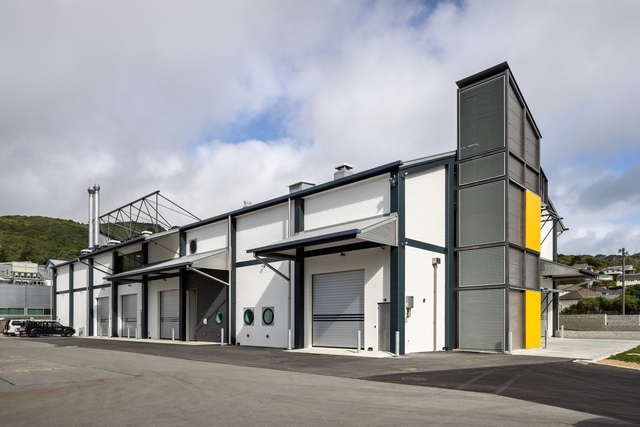
The long, successful working relationship between the architects and Whittaker’s is evident in this new roasting hub. The two-storey, purpose-built facility is stage nine of a masterplan, and continues its clear, consistent architectural language. With respect for the original gabled roofline of the industrial buildings, a strong hierarchy of building form, structure and material has been developed with confidence. Windows allow natural light and views to be experienced from within the work environment, and sunshade louvres both control sunlight and add a layer of texture to the exterior. The human scale is never forgotten in this building that reflects a business where employees are treasured.
Resene Colour Award winner
A simple colour palette of black steel portal frames, white infill blockwork and Payne’s grey contrasts with yellow highlights on the façade, creating a strong hierarchy of form and materials that includes playfulness and delight. The robust, functional colours of safety equipment are embraced, and colourful blue and yellow ducts, red-and-white striped rubber flooring, and bright yellow safety gates punctuate the interior.
Hunter Atrium by Tennent Brown Architects
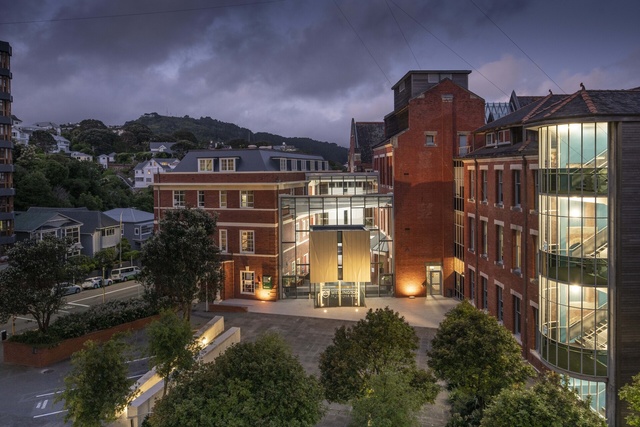
Wedged carefully between the Hunter and Robert Stout Buildings of Te Herenga Waka Victoria University of Wellington, this light-filled atrium provides both a new front door to the university’s administrative facilities, and multi-level connections between the two buildings. Occupying the footprint of a previous building, the project sets about attentively restoring the existing facades, with the glazed envelope allowing full visibility of the two heritage buildings it adjoins. The crisp and subtly detailed zinc entry portico and voluminous interior create an engaging and civilised public environment for staff, students and visitors.
Education
McKinnon, Scots College by Athfield Architects
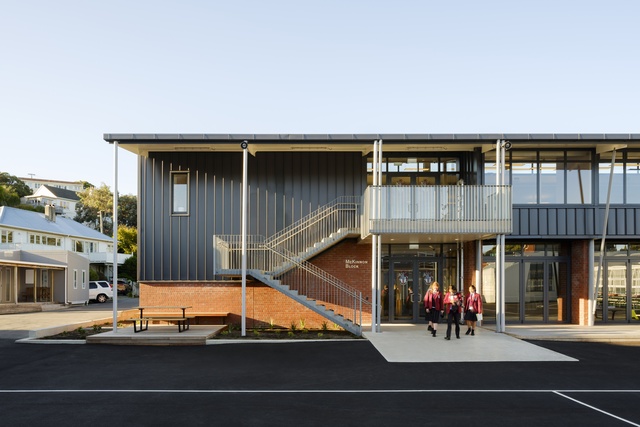
This new, multi-purpose, two-storey building is located on the school’s southern boundary to maximise its potential for future campus growth and connect it to a sheltered, north-facing courtyard. The ground-floor spaces house social and pastoral care facilities to support the recent admission of girls to the school, and enable a sense of belonging for these new students. The upper floor contains a variety of learning settings, from technology-driven spaces to smaller group settings located within ‘nooks’ formed by the structural bays. High clerestory windows admit southern daylight and natural ventilation into the learning spaces, creating comfortable learning conditions. The architects worked closely with stakeholders and students to create a flexible learning environment that will accommodate the evolving needs of the college.
Wellington East Girls’ College Redevelopment by WSP Architecture
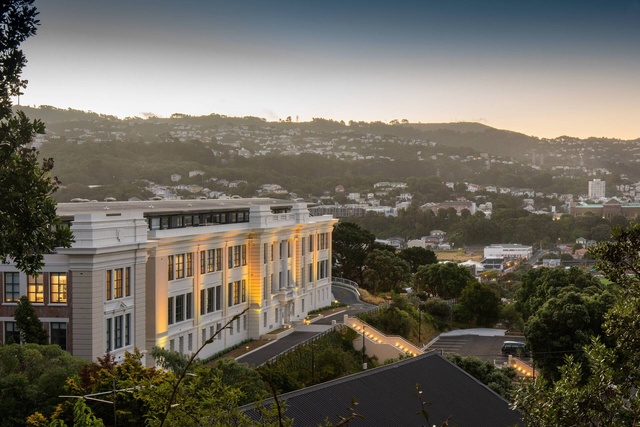
Protected behind the strengthened and restored historic façade are three new linked buildings that contain a vibrant modern learning environment. Deftly located and well planned, these new buildings create a continuous, stimulating ribbon of specialist learning environments overlooking and connecting to a generous outdoor quad. The college once again occupies the heart of its school, with this technically complex project connecting the promising futures of its students with its historic past. These welcoming learning environments that support pedagogical innovation and flexibility are a valuable asset to the school - and the city.
Enduring Architecture
McKenzie House (1959) by Plischke & Firth Architects
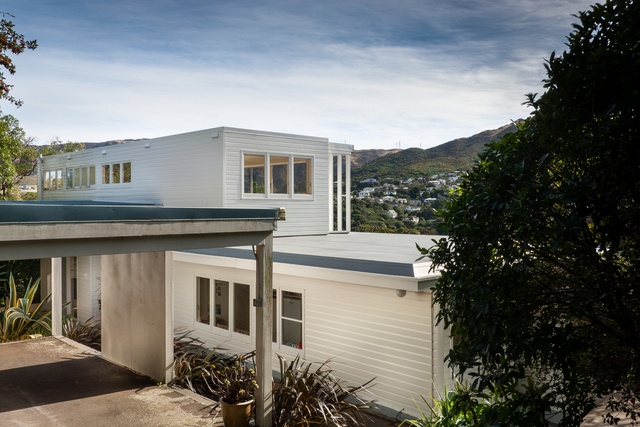
Designed by Cedric Firth of Plischke and Firth Architects, and completed in 1959, the McKenzie House is a rare example of an unaltered Modernist home in Wellington. Firth’s design expertise is evident, from the siting of the home to its most intimate details. The planning allows for varying degrees of open living and small spaces for retreat, which still feel fresh and remarkable; the cosy den is a favourite spot, and has been lovingly restored. The detailed, built-in cabinetry is a joy to use and adds to the layering of texture and material, creating a rich and rewarding spatial experience. The commitment of past and present owners, who have recognised the importance of this home in our architectural history and lovingly preserved it, is to be commended.
Heritage
Cuba Precinct Redevelopment by Athfield Architects

Athfield Architects have delivered a cohesive and sensitive example of how to maximise heritage value at scale through this beautiful restoration, both of a façade and of interior details. Combining three buildings into a single commercial proposition has unlocked a clever structural solution which ensures an unobtrusive and sympathetic outcome is achieved. The design ensures that heritage features are expressed with lightwells, facades, retained and repurposed timber, and pressed ceiling details creating a rich and rewarding spatial experience. This is a well-balanced design response that both captures the spirit of the original heritage building and meets commercial demands.
Wellington East Girls’ College Redevelopment by WSP Architecture

A significant and highly visible fragment of Wellington’s built history has been preserved with the retention of the heritage façade of the Main Building, Matairangi, at Wellington East Girls College. This was a complex strengthening exercise, in which the multi-storey unreinforced masonry façades of the 1924 Category 1 Heritage listed building were attentively rebuilt. The historic vestibule has been painstakingly and beautifully restored, and reconnected to the daily life of the school. This was an important project, not only for the place the façade holds in the Wellington cityscape, but also for the significance of the building and its vestibule for generations of Wellington East students.
Interior Architecture
GW Cuba Workplace Fit-out by Athfield Architects
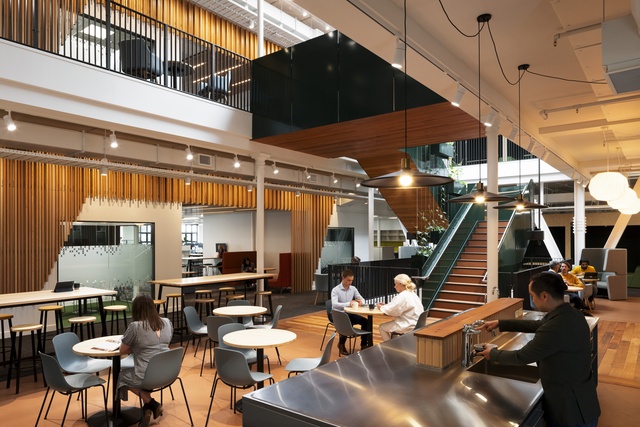
Using the metaphor of a forest canopy, tree trunk and forest floor, and including the re-use of heritage elements, the architects have created a workplace that is richly layered in texture, materials and colour. Connections between the strong urban edge of Cuba Street and the interior workspaces are articulated by floor and wall finish selections that transition from hard to soft materials, while patterns in the floor reinforce circulation routes. Lighting is successfully considered, from ensuring natural light penetrates through heritage windows and skylights, to the use of locally made pendants that add a delicate touch to the ceiling. There is no doubt this interior uplifts the human spirit.
Resene Colour Award winner
A colour palette that references the forest floor and canopy is used strategically to organise circulation and define spaces. In particular, the curving green stair balustrades, contrasted with the dusty, earthy tone of the linoleum on the treads, makes moving between levels a delight. Additionally, the occasional heritage column painted in contrast to its neighbouring columns is not only a helpful wayfinding element, but a joyful use of colour.
Waitohi – Johnsonville Library and Community Hub by Athfield Architects
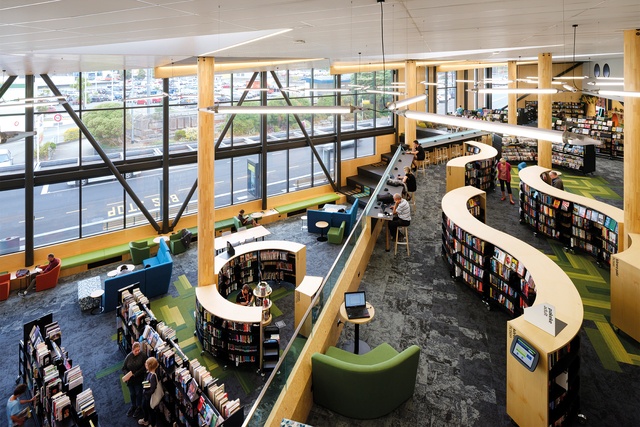
By using the original landscape of Johnsonville as a starting point, a confident tectonic architectural language has been developed at Waitohi. The result is an interior with a clear hierarchy of zones, circulation and vibrant multi-level connections. The architects’ creation of a range of spatial experiences showcases their consistent attention to materials and concern for the human scale; shifts between these spaces are carried out with expertise and clarity. As a result, the library’s many and varied places to sit, meet, read, work and play have become a visible source of lively activity for the adjacent streets. This is an uplifting public interior that forms a rich backdrop for a wide range of community uses.
Public Architecture
Our Lady of Kāpiti Parish Church by DLA Architects
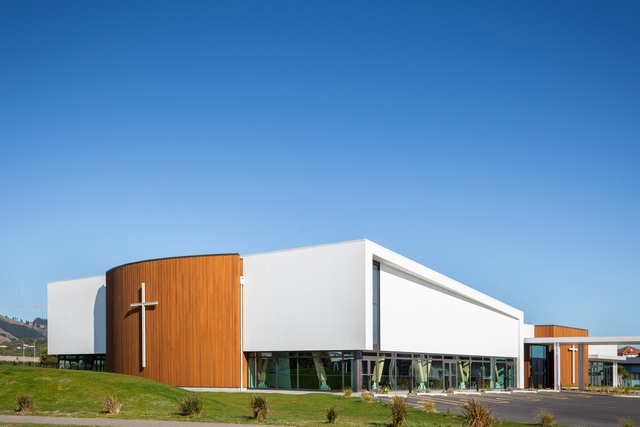
This building collects and connects two Kāpiti parishes and three former churches under one roof. Elevating the cladding above a band of glazing connects the interior to the surrounding landscape and clarifies the parishes’ intention to play an inclusive and open role in the Kāpiti community. Themes of openness and connectivity continue inside, where the central gathering space connects directly to both the smaller chapel and larger nave, allowing seamless flexibility. Substantial laminated-timber cross-bracing is expressed within the nave and adds contrast and richness to the largely white interior. This is a project that more than meets the brief for a modest, elegant, warm and welcoming building.
Te Awe Library by Herriot Melhuish O’Neill Architects
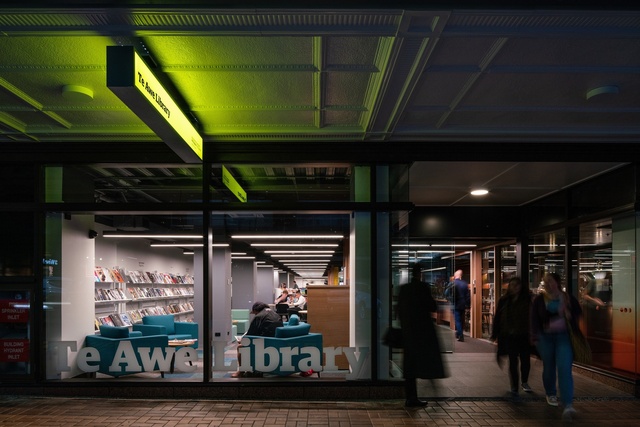
To create an interim library in an existing, heavily constrained building, the architect deployed a design strategy to craft a public space that is generous in both spatial experience and quality. The library’s two public entrances are connected via an internal laneway subtly interrupted by an astutely angled reception counter. Stairs and vertical circulation are located within a double-height space that serves to visually connect the ground floor with the upper mezzanine. Ceilings have been eliminated and services exposed to mitigate the low floor-to-ceiling height, while thoughtfully curated lighting and low bookshelves create a more generous sense of space. Te Awe Library is a welcoming public space for the community to make its own, whether as a living room, a study area, or a place to simply pause.
Small Project Architecture
Good Books by Bonnifait + Giesen Architects / Atelierworkshop
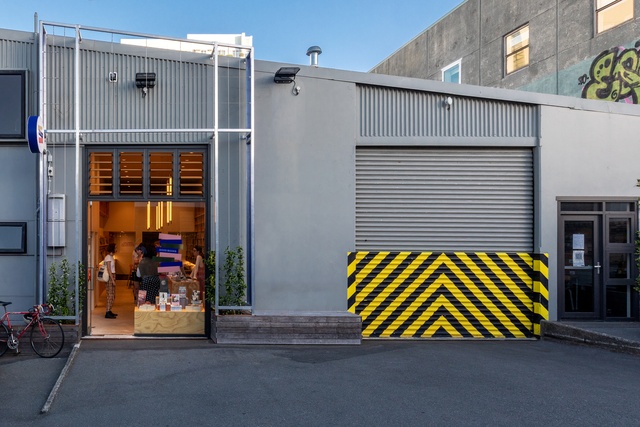
The deceptively simple and highly considered design for this new bookstore focuses on three key ideas: entry, display and lighting. An industrial building facade is given new depth and visibility with the addition of a frame for climbing plants and blue panelling that reflects the store’s brand. Once inside, modular plywood bookshelves, lit from within, line each wall and allow the books themselves to become an ever-changing, living wallpaper. A central table guides circulation and provides a place to pause and engage. Custom tubular pendants hang freely through the centre, delicately illuminating the high shelving and emphasising the depth of the space. This is a fine example of how an intimate design, focused on the human scale and experience, can bring a space to life.
Colley Studio by Tse : Wallace Architects
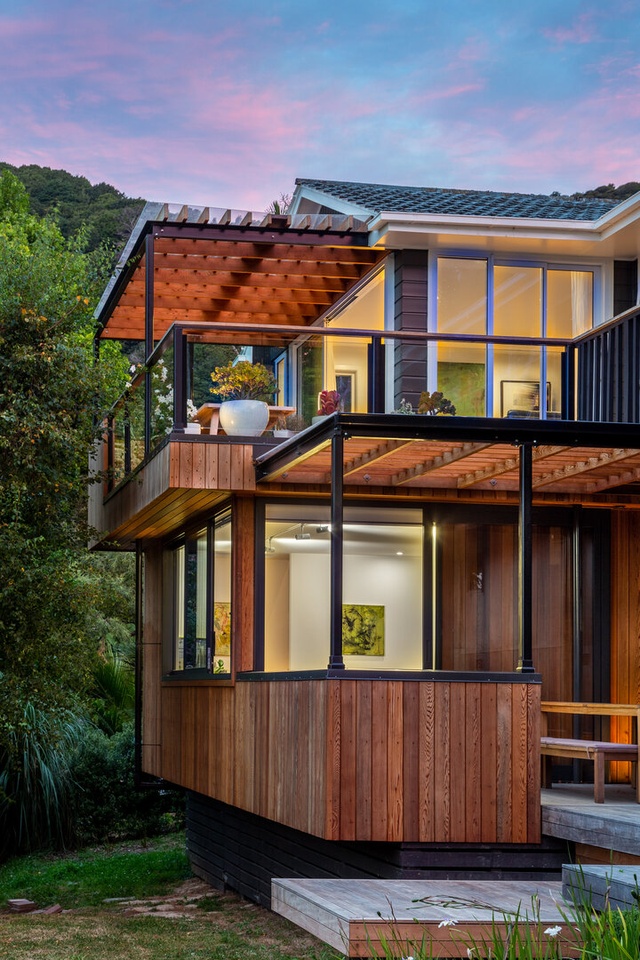
An elegantly layered composition of timber forms belies the technical difficulties posed by this small and challenging site. Solved with an inventive cantilevering steel structure, this small addition to a 1960s Lowry Bay home appears to hover. Superbly crafted in every respect, this artist’s studio, with a deck above, is the product of a high level of precise detailing. This delicate and thoughtful response is calming and uplifting, and provides a flexible and useful space that enriches daily life.
The NZIA Local Awards 2021 programme is supported by Resene and APL.

